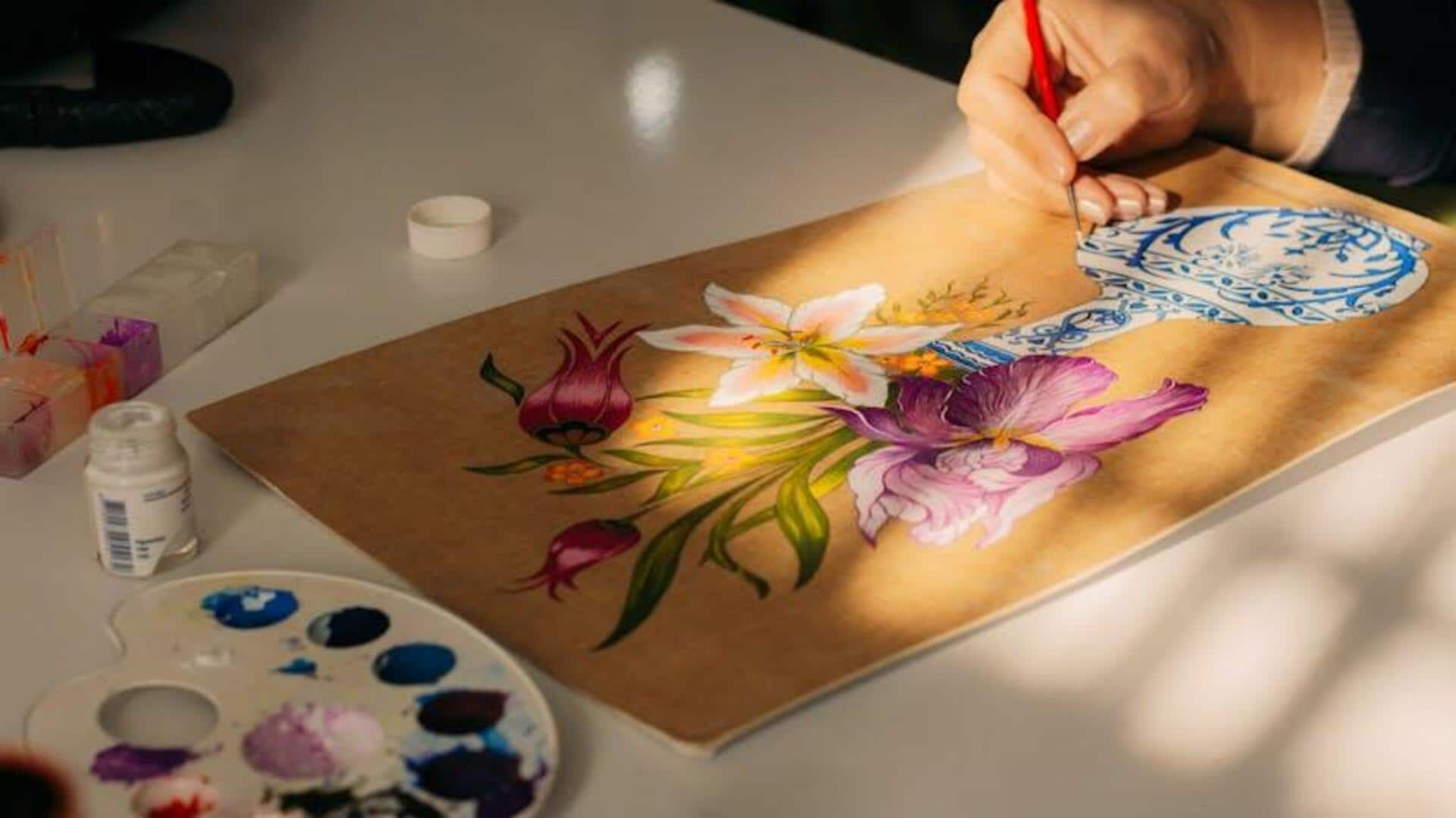
Color mixing enhances creativity: Here's how
What's the story
Color mixing is a captivating process that can enhance creativity to a whole new level. By knowing how different colors react, artists and designers can make eye-catching compositions. Here are five practical ways to boost creativity with color mixing, and some insights into techniques that can be utilized in different forms of art. Be it a pro or novice, these tips will help you discover the infinite opportunities of color combinations.
Drive 1
Experiment with primary colors
Primary colors are the basis of all other colors. By playing around with red, blue and yellow, you can create a huge palette of secondary and tertiary colors. This playing encourages out-of-the-box thinking as you discover new shades and tones. Try mixing different proportions to see how the slightest of changes affect the outcome. This not only improves your color theory knowledge but also generates innovative ideas for your projects.
Drive 2
Use complementary colors for contrast
Complementary colors are literally opposite each other on the color wheel and offer high contrast when combined. Mixing these colors can produce stunning visuals that are hard to miss. For example, mixing blue and orange or red and green creates mind-blowing contrasts that lend depth to your work. Using complementary colors well takes practice but yields rewarding results in terms of visual impact.
Drive 3
Explore monochromatic schemes
Monochromatic schemes involve using variations of a single hue by adjusting its saturation and brightness levels. By choosing a monochromatic scheme, you simplify the color selection process, but still have room to explore creatively within a limited palette. By focusing on one hue, you can develop a keen sense of balance and harmony in your artwork or design projects.
Drive 4
Incorporate analogous colors for harmony
Analogous colors sit next to each other on the color wheel and often have similar undertones, making them harmonious when mixed together. Using analogous schemes keeps compositions united while still providing variety with subtle tone shifts or shade differences between adjacent hues like yellow-green or blue-violet combinations.
Drive 5
Practice layering techniques
Layering consists of applying multiple layers of transparent paint over each other so they interact visually without completely blending into new solid hues as soon as they hit the canvas. This gives artists more control over final appearances as they can build up desired effects gradually rather than just relying on initial mixes alone.